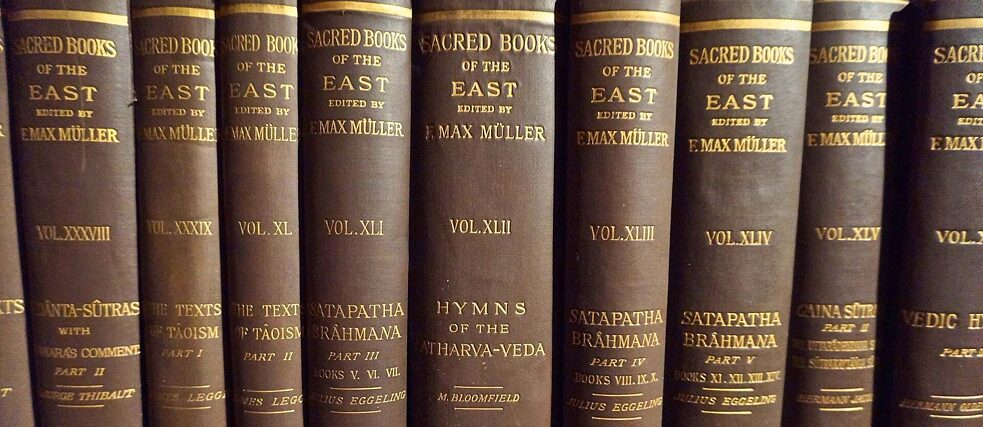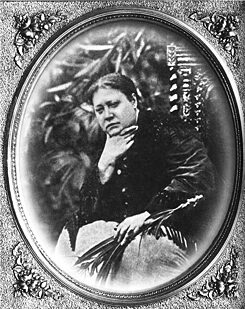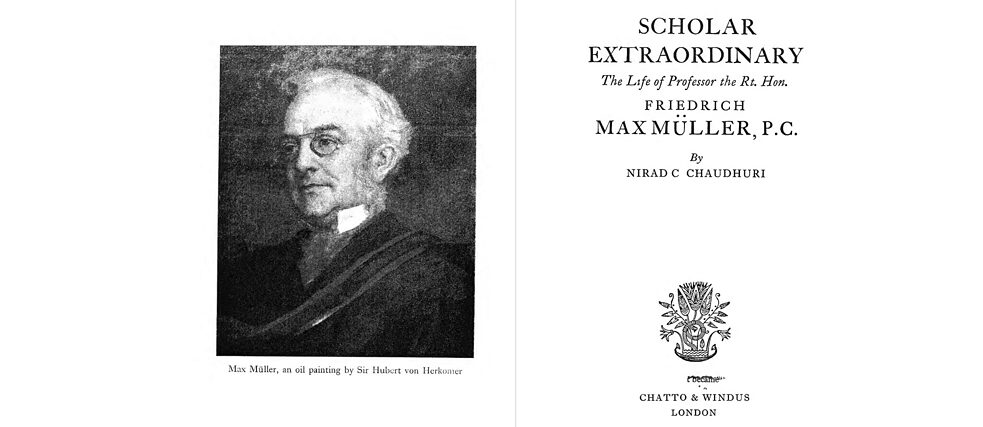Max Mueller and his Contemporaries
Comparative Religion in the Nineteenth Century

Max Mueller - Sacred Books of the East
|
Photo (Detail) © Sam.Donvil, CC BY-SA 4.0 , via Wikimedia Commons
The study of comparative religion went through its most defining phase in the nineteenth century, with academic scholars and popular writers globally engaging in it. This piece examines Mueller and his contemporaries’ contributions to the field, evaluating his relevance and influence in both contemporary and historical discourse.
By Mriganka Mukhopadhyay
Significance of Max Mueller
Max Mueller (1823-1900), a German philologist and Indologist who taught at the University of Oxford, remains a crucial figure in the development of comparative religion as an academic field. He is well-known for translating the Rig Veda and the various Upanishads from Sanskrit into English, among other works. His academic study of the Sanskrit language and the Indian religions, from a comparative perspective, promoted Indology on a world stage. As a result of his efforts, the academicians and religious virtuosos of Western societies started developing a strong curiosity towards the study of ancient Hinduism as well as the pre-modern Indian languages. In the process of the construction of comparative religion as an academic field, one of the key components was the translation of ancient religious and philosophical texts from Indian languages into English. Max Mueller and a few other English scholars and administrators, such as William Jones, Charles Wilkins, Horace Hayman Wilson, and Sir Monier Monier-Williams, played a crucial role in translating, preserving, and promoting pre-modern texts written in Sanskrit, Pali, Tamil, and other modern Indian vernaculars. Most often, these individuals were linked with the British political or educational sector, highlighting the integration of comparative religion study and translational works into the colonial knowledge production system. This process largely served imperialist interests, emphasizing the undeniable link between colonialism and the evolution of comparative religion studies.Max Mueller’s interest in the study of comparative religion had a background in German Idealism. The latter, along with orientalism, also shaped the understanding of ancient religions among several nineteenth-century scholars in continental Europe. While Indology developed prominently during the nineteenth century in Max Mueller’s home country in Germany, the neighbouring Netherlands also exhibited a growing interest in Asian religions. Two notable Dutch scholars, Cornelis Petrus Tiele and Pierre Daniel Chantepie de la Saussaye, were pivotal in this development. They studied several ancient Asian religions from a comparative perspective, contributing significantly to the establishment of Religious Studies as an academic discipline in the Netherlands in the late nineteenth and early twentieth centuries. All these academic endeavours collectively constructed a European academic authority over the study of “Oriental” religions, which continued to flourish through the twentieth century.
Although Max Mueller never visited India, his works on Hinduism led to his engagement with several Indians interested in reinterpreting Hinduism. He had close connections with religious figures in Bengal including Keshab Chandra Sen, the leader of the Brahmo Samaj. Max Mueller wrote a biography of Sri Ramakrishna, the prominent Hindu mystic, also influencing Swami Vivekananda, who shaped Western perceptions of Hinduism based on Max Mueller's writings. To date, Max Mueller remains a crucial cultural and historical agent behind the modern interpretation of Hinduism – both in the academic contexts as well as in the popular discourses.
Max Mueller's Religious Critique
Snapshot from "Scholar Extraordinary" by Nirad C. Chaudhuri
Although a “scholar extraordinary,” Max Mueller’s academic study of religions and languages carried the baggage of his own religious background. As a practising Lutheran, he held critical views about polytheistic practices. Additionally, he was also polemical against Theosophy, which promoted a religious worldview substantially different from Protestantism. His staunch criticism of the Theosophical movement was most prominently reflected through a series of lectures delivered in London in 1892, which were compiled and published in 1893 as a monograph titled Theosophy or Psychological Religion. Through these lectures, he argued that any religious phenomenon should be understood only by proper historical methods and not by any occult or esoteric means. Despite criticism, the Theosophists occasionally consulted the works of Max Mueller. This tendency began with Blavatsky, the high priestess of Theosophy.
 Helena Petrovna Blavatsky (1831-1891) in 1881.
| © Public domain, via Wikimedia Commons
Helena Petrovna Blavatsky (1831-1891), the Russian-born founder of the Theosophical Society, popularised the concept of occultism in the Anglophone world. She was interested in the comparative study of religions to unearth the ancient divine wisdom. Her Theosophist followers across the world were keen to know about religions other than their own, projecting the idea of “universal brotherhood” for interfaith dialogue in a Theosophical context. Western Theosophists, in particular, displayed curiosity toward Hinduism and Buddhism and closely followed the works of Max Mueller to understand the academic perspective on comparative religion. Although disagreeing with his arguments, Blavatsky was occasionally found referring to Max Mueller’s writings in her works. This trend of consulting Max Mueller’s works also continued among other Theosophists. For instance, Colonel Henry Steel Olcott, her colleague and the founder-president of the Theosophical Society, met Max Mueller at Oxford in 1888 and corresponded with him on multiple occasions. Similarly, in 1893, Annie Besant, the well-known Anglo-Irish Theosophist and later President of the Indian National Congress, remarked in an editorial piece that Max Mueller identified the Upanishads as “theosophy.” This should have encouraged her to publish a translation and commentary of the corpus from a Theosophical perspective in 1907 titled The Wisdom of the Upanishats.
Helena Petrovna Blavatsky (1831-1891) in 1881.
| © Public domain, via Wikimedia Commons
Helena Petrovna Blavatsky (1831-1891), the Russian-born founder of the Theosophical Society, popularised the concept of occultism in the Anglophone world. She was interested in the comparative study of religions to unearth the ancient divine wisdom. Her Theosophist followers across the world were keen to know about religions other than their own, projecting the idea of “universal brotherhood” for interfaith dialogue in a Theosophical context. Western Theosophists, in particular, displayed curiosity toward Hinduism and Buddhism and closely followed the works of Max Mueller to understand the academic perspective on comparative religion. Although disagreeing with his arguments, Blavatsky was occasionally found referring to Max Mueller’s writings in her works. This trend of consulting Max Mueller’s works also continued among other Theosophists. For instance, Colonel Henry Steel Olcott, her colleague and the founder-president of the Theosophical Society, met Max Mueller at Oxford in 1888 and corresponded with him on multiple occasions. Similarly, in 1893, Annie Besant, the well-known Anglo-Irish Theosophist and later President of the Indian National Congress, remarked in an editorial piece that Max Mueller identified the Upanishads as “theosophy.” This should have encouraged her to publish a translation and commentary of the corpus from a Theosophical perspective in 1907 titled The Wisdom of the Upanishats.The Indian Theosophists also showed an interest in rethinking Hinduism and Indian philosophy with a comparative approach. Several Indian Theosophists, such as Mohini Chatterji, T. Subba Row, and Bhagavan Das, among others, extensively wrote and lectured on various Indian philosophical traditions and Hindu religious texts while drawing comparisons with Christianity, Buddhism, and Sufism. They often used Western intellectual traditions as reference frames in their writings. This led to a comparative approach between Indian and Western traditions as can be found in frequent references to Christian scriptures in Mohini Chatterji’s translation of the Bhagavad Gita. In another instance, Purnendu Narayan Sinha, a Bihar-based Bengali Theosophist, published a translation and commentary of Bhagavata Purana, a Vaishnavite text, beginning with a passage from The Song of Solomon. It can be argued that such comparison between disparate religious traditions created avenues for a reception of Western culture in the Indian intellectual world, thus enriching the global religious history.
Max Mueller, a product of the historical era he lived in, exerted a profound global influence that extended beyond academia, resonating even among religious virtuosos. His contributions to India's religious, cultural, and intellectual history and widespread appreciation can be observed beyond academic circles for the scholarly work of a European university professor, spanning generations. Not many scholars of modern Humanities can claim such a credit. But Max Mueller continues to remain relevant in the study of religion and culture even after more than a century since he died. Perhaps, this is why he can be considered one of the most prominent cultural mediators between India and Germany in modern times.
